Text
Artificial Intelligence | Creya learning
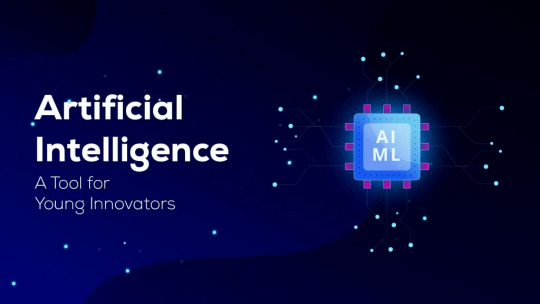
Artificial Intelligence or AI as more popularly known is the simulation of human intelligence processes by machines, especially computer systems. The world we live in today is inundated with data beyond the comprehension skills of an average human mind. The ability of machines to process large data for required outcomes is far more efficient compared to humans. This opens up limitless possibilities for solving many of today’s problems. If the machines and programs could work and think like humans but at far higher speeds, they can find solutions for predicting risk behaviours, accidents or improving crop yields and providing customer insights. There is no important field today where Artificial Intelligence is not being applied, whether in medicine, manufacturing, banking or gaming AI is being explored everywhere. Every aspiring innovator should understand and be able to apply AI in finding solutions for the problems they are working on. AI frees up human resources to focus on bringing in more and more complex problems for which solutions are required to make the world a better place. Of course, given the immense capabilities and application possibilities, the ethical use of AI is also a growing area of study and concern.
AI brings in the possibility of combining the power of machines with human thinking as one package: this allows problem solvers and designers to teach machines to think by giving it a thinking algorithm and data for training, this is fine-tuned using a correcting mechanism. The capability of machines to do repetitive, detail-oriented tasks better and faster through techniques such as pattern recognition opens the possibilities of innovations in fraud detection, predicting risk behaviours, developing a smarter tutoring chatbot or creating engaging games where the game can continually learn and level up the bar for each player based on their performance. Innovation is all about trying new possibilities and checking out if they solve a problem in a better way. AI allows for this sophistication with the scope for modification based on learnings and user insights at unprecedented speeds. The simulations allow us to rapidly iterate the process of design and prototype and test. The simplicity of using AI without the need to know complex programming makes AI affordable and accessible today to young innovators and students. know more
#STEM Lab for schools#Robotics Lab#Design Lab for Schools#AI Coding for Schools#Design Thinking for School Teachers#STEM Lab Companies India
0 notes
Text
Block coding developing computation skills the fun way
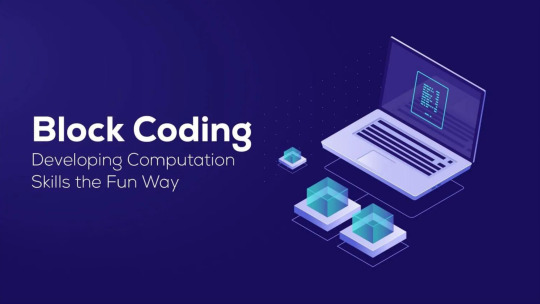
Block coding is the way of coding which utilises a system that focuses on audio-image-based visualisation of the coding that is being done. In this, the students instead of written codes drag and drop a set of instructions to control the object on their screens. This creates a better understanding for the students and drastically eases the comprehension process of coding. Block coding allows the students to learn computational skills with ease as opposed to the traditional text-based understanding of coding.
In this way of learning, students arrange a set of instructions in a particular order for the functioning of the associated imagery or sound. This instructions could be in the form of words like ‘move left, turn right’ and other similar instructions. These coding blocks each convey a different kind of instruction and allows the students to manipulate the associated imagery or audio using the blocks.
This gives them a base for later learning the written form of coding. The building of a strong base immensely aids the students in later stages when they have to perform functions utilising written codes. Examples of block coding experiences include games that are based on clicking, dragging and dropping objects and many other such associated games.
Block coding system involves numerous instructions, mostly in written format that students can manipulate to send instructions for the audio and visual response. This process at a young age for the students is essential in better understanding each instruction as they get a response for each for their actions, providing them with better understanding.
Puzzle format and requirement of computing in each of the Block coding games creates challenges for the students in using the instructions for manipulating the audio-visually responsive objects on their screens. The challenges help them put to test their critical thinking to come up with good solutions, with in turn helps them to develop their critical thinking ability through practice.
The audio-visual cues and story-like nature of many of the block coding systems allow students to explore the features with an aspect of fun, this is vital to boost their creativity. The wide range of image and audio response features available gives them more scope to implement their creativity. This application enrich their creative thinking skills. know more
#3D Printing projects for schools#Tinkering labs for schools#Makerspaces for school#Maker Spaces for schools#STEM teacher training#NEP 2020 for schools
0 notes
Text
Python Simple Start to Serious Programing
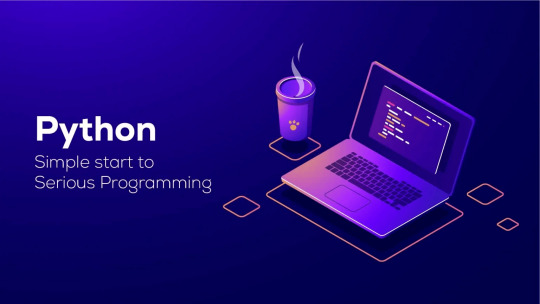
Python is a highly efficient, object-oriented high-level programming language. Python offers an edge over other programming languages as it has an easy-to-learn syntax which use general spoken English in most steps. It also removes the need for compilation and can be executed without compiling. Python programming language can be utilised for developing websites, web applications and many other associated programs.
Python programming has an efficient system that allows the programmer to focus upon the core dynamics of application by eliminating the need to focus upon common programming tasks. It’s also a highly compatible programming language which can be easily accessed across operating systems. Python offers an ease in maintaining the source code which makes it a highly attractive option for users. Python also maintains a constant interface across platforms which is crucial for ease of usage.
Python is an incredibly efficient programming language that allows users to develop applications on numerous platforms with ease. This ease of functionality is essential for quick development of software that can be utilised for different functions. The easy application of Python allows it to reach a wider range of people and makes it easier for beginners to find the drive to code.
Python is an open-source programming language that removes the financial barriers associated with usage. The ease and accessibility of Python allows for more experimentation and innovation using the language. It allows the users to focus a lot more on the core of the applications, allowing the development of better and more innovative applications. Python has an inbuilt debugger, this makes the debugging process simpler and allows the testing of written codes. This way of debugging immensely improves the speed of the entire programming process which is one of the numerous advantages that Python offers.
Eliminating redundant additional tasks, ease of general usage, easy debugging, increased production speed and compatibility with numerous platforms in the same format makes Python a highly efficient programming language that allows the immense scope of experimentation and consequently innovation. Python is the crucial boost in the world of programming, essential for innovation. know more
#Design Thinking for School Teachers#STEM Lab Companies India#Python Programming Courses for Schools#Innovation Labs for schools
0 notes
Text
App Development A Tool For Young Innovators | Creya Learning
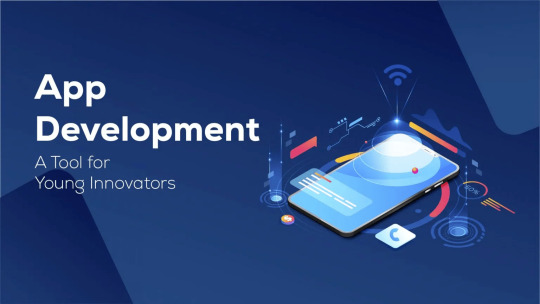
From infant toddlers to ageing grandparents, everyone loves and uses multiple Apps every day. In fact, some of them have become an integral part of our lives that we don’t even imagine life without them, for example, the calendaring app for a busy executive or the learning app for a school student. The increased computing power in our internet-enabled smartphones and tablets ensured the proliferation of Apps for both individual users and enterprises.
From requiring deep programming language expertise, today many tools help people with ideas to be able to create apps on the fly to test their ideas and build businesses. Given the ubiquity of Apps and the ease with which one can get started with simple Apps and go on to develop further as users increase has made Apps the perfect tool for innovative disruption. Take for example, a simple app like Uber has disrupted the entire car ownership and sales industry.
Apps are the perfect tools for combining a user need, design and technology for solving pressing problems of the world of entertainment, making App development a must-have skill for every aspiring innovator.
Apps have not only disrupted many long-established, but inefficient business models, but also democratised access of information and services to those who need it and when they need it and anywhere at an affordable cost. Whether it is managing vaccination drives or getting a car for a ride or finding the best video lessons for a topic, Apps answer every need in the best possible way.
The ability of Apps for being able to be built and managed with ease, being able to run on small processing devices like simple smartphones and not big computers and above all, the interactivity that allows kids, grown-ups, educated and not so educated to be able to operate them has made them the lynchpin of modern-day innovation toolkit.
Apps also can be easily refined with more adoption and collection of user insights making them power evolving tools for any need. Innovation is all about trying new possibilities and checking out if they solve a problem in a better way and Apps make that possible. The simplicity of App Development without the need to know complex programming is making App Development affordable and accessible today to innovators and young students. know more
0 notes
Text
3D Desgin & Printing | Creya Learning

3D design is the process of using computer-modelling software to create an object within a three-dimensional space. The use of computer tools greatly eases the modelling process of complex machines, our homes, everyday things we use and even art. 3-Dimensional designing allows the creators to visualise the spatial environment with better precision which is essential for sophisticated designing.
3D Design reduces the margin of error by removing the multiple levels of designing required in 2-D design for each real-life object thereby reducing costly mistakes which might occur when the product is being constructed in the real world. The 3D design allows experiencing the product from all views, giving them and the end user great clarity, allowing it to be improved.
With reduced costs and the ease of designing, visualizing and converting prototypes through the use of 3D Printers has made 3D Design and Print the choice of Rapid Prototyping. For would-be innovators, this is a must-have tool that enhances the ability to see what they are designing and feel the prototype in a short time and at low costs
#Top STEM Learning Company India#Best Coding Program for schools#STEM Lab for schools#Robotics Lab#STEM Curriculum Middle School
0 notes
Text
Digital Platforms: Demystifying and Democratizing the Design Thinking & Systems Approach for Learning

We are hearing quite a bit about design thinking and (to some extent) about systems approach across board rooms and classrooms. But, what do design thinking and systems approach have to do with learning and teaching? Well, design has come far from the studios of select few mavericks focused on creating 'cool products' to being Design Thinking: the human-centered improvement of experience that subsumes products and services. Systems Approach (SA) complements Design Thinking(DT) by urging the problem solver to broaden the horizons and look at the interrelatedness of the moving parts, focusing on synthesis and not just analysis. So, to that extent, I will use DT to refer to both.
Why is it important to include DT in the classroom experience? For one, the 5-steps of the typical design thinking cycle: empathize, define, ideate, prototype and test provide any user a framework that can help them solve a problem and make the world better: the end goal of learning. Incorporating DT also widens the scope of learning beyond literacies to include development of skills such as creative thinking, critical thinking, collaboration and communication: essential for success in the 21st century world. No surprise that DT helps immensely improve the process of 'learning'. Having said that, wide-spread adoption of it is still not global due to challenges of costs, capabilities and, not the least, of mind-sets, begging the question:how can we demystify and democratize the adoption of DT in classrooms. I believe the advances and proliferation of different digital platforms and technologies hold the key. Let's look at a few of them.
Simulated Environments give students the chance to be 'in the moment' experientially without actually having to be there physically and help build empathy. Imagine students experiencing the horrors of wars virtually in the classroom, like no history class can ever give it. Beyond the gaming apps like 'World Rescue' or the 'Journey North' Project, it's the Augmented Reality(AR) and Virtual Reality(VR) tools that will bring in truly immersive experiences to classrooms. Adoption will increase steeply as everyone from Facebook (Oculus), Microsoft (HoloLens), HTC (Vive) to Google(Cardboard) are driving down costs and develop newer uses for learning and entertainment.
Finally, testing lets you see if you are on the right path and improve based on feedback, and this reflection is important for learning to progress. Some of the digital platforms for this include simple shared drives and Digital Portfolio Systems like the Seesaw. While I have barely scratched the surface on how digital platforms can be used by learners and teachers for adoption of DT & SA, how policy makers can use it for making systemic and strategic changes will be the game changer of classroom experience, a topic for some other day. know more
#STEM Lab for schools#Robotics Lab#Coding Program for schools#STEM Curriculum Middle School#Design Lab for Schools#Design Thinking for School Teachers
0 notes
Text
Is the next Edison or Archimedes stepping out of your home?

An innovation here and there was good enough to make our world a better place long back, but will that hold good for today’s world, where every day there is some change happening, what with glaciers melting faster than ever before, technology changing every day and rapid globalization making civilizational and lifestyle changes an everyday matter.
Today’s needs will not be sufficed by the availability of an ivory tower innovator here and there. To be able to solve for the challenges that beset today’s world at large and in our personal lives, we need everyone to be an innovator in their own right, whether one is a student, employee, scientist or a leader.
We do not have the luxury of waiting for that eureka moment and have to consciously design for it and work towards it every moment of the day and in every goal and challenge we aspire to solve for. This is what will make the world a better place to live.
So, coming to what goes into making an innovator? Studies have also shown than Edison’s or Da Vinci’s brain composition is just the same as anyone’s brain, then what is it he did differently that made him an innovator? Well, the answer is simple, his approach to problems involved a little of intuitive deduction, some analysis and a lot of inspiration from a deep urge to make a change. Its “Thinking” and “Doing” in a nutshell.
I believe it is the onus of every parent, educator, leader and anyone that matters to understand this and allow the learning process to have opportunities where the young generation is allowed to do, feel, think and do. The impact of this can be multiplied exponentially when given a framework to work along. We have so many of them today that help in these lines including the design thinking in education, experiential learning, integrative STEM and 21st Century Skills.
But as a parent, teacher or a well-wisher, you can the simple first steps by asking the right questions, allow children to immerse and feel for the problems and opportunities around and dirtying their hands working on them. This will help them lead more fulfilling lives and along the way, make the world better place to be in. know more
#vSTEM Lab for schools#Robotics Lab#Coding Program for schools#STEM Curriculum Middle School#Design Lab for Schools#AI Coding for Schools
0 notes
Text
STEM Labs, Tinkering Spaces and Design Studios
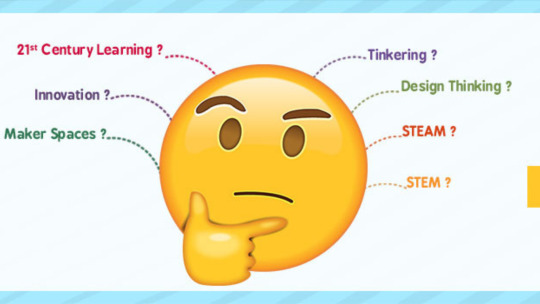
Every progressive school and educator already has a STEM Lab, Tinkering Space (Maker Space) or a Design Studio or is just on the verge of getting one to their school. It’s the ‘in thing’ today to have and rightly so, for it is one small step towards a giant leap away from rote learning.
With so much awareness in school leaders around the need for a truly experiential project based learning (PBL) to be included as part of school calendar coupled with the emphasis by the top echelons of the Govt. on tinkering and innovation, Indian K12 education is poised for a monumental transformation towards 21st Century Learning.
First things first: STEM or STEAM (with a little bit of focus thrown on Arts) is just semantics unless you focus on the end learning outcomes you want. The STEM/STEAM based activities or projects are a means to an end, not the end itself. We can have the best of the IoT, Robotics, Engineering Mechanics or Electronics Kits, but of no use, unless the project activity design around them is right.
This brings us to the second question of the need for a structured approach. While Tinkering movements and Maker Spaces symbolize the free spirit culture of getting hands-on before minds-on, sustaining the same requires an entire eco-system of parents, teachers and the education system to adapt. Given where we are at the moment and the constraints of capabilities and mind-sets, a well-designed transition path from guided activities to open ended challenges should help children get the best out of any PBL based STEM/STEAM activity.
So in essence, STEM/STEAM Lab, Tinkering/Maker Spaces or Design Studios are not isolated add-on activities in a school. They all blend together towards the end goal of helping students acquire Thinking Skills,
#STEM Lab for schools#Robotics Lab#Coding Program for schools#STEM Curriculum Middle School#Design Lab for Schools#AI Coding for Schools
0 notes
Text
Learning in times of Lockdown: Your journey to Online Learning
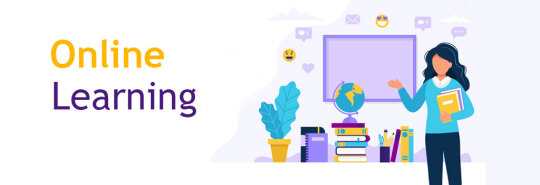
Dear Educator,
Life in a Lockdown is not easy for anyone. Ensuring Learning continues under Lockdown is even more difficult, especially if you are an educator being bombarded with too much information on Online Learning. It's a fact that all of this has come so sudden, leaving many of us ill-prepared for ensuring teaching happens just in a classroom, while both students and teachers are sitting in their homes.
As a school leader, you may have questions as simple as how do I equip my teachers, which tool should I use to connect with my students at the lowest cost and best experience, and many more. As a teacher you will have questions as simple as what kind of set-up I need at home to connect to 30 students simultaneously, should I use the same lesson plans I have, to how do I ensure discipline when I cannot adopt my usual stare at the students and many more.
We would be more than glad to address any of your queries on your journey of Online Learning. know more
#'STEM Lab for schools#Robotics Lab#Coding Program for schools#STEM Curriculum Middle School#Design Lab for Schools#AI Coding for Schools
0 notes
Text
Internet of Things (IoT)| Creyalearning

The networking between objects from everyday household items to complex industry components involving sensors, transmitters, software allowing the exchange of data and control of these systems between devices over an internet connection is the Internet of Things (IoT).
This interaction between smart devices and systems, exchanging data to an offsite or cloud-based solution for meaningful, time-sensitive actions using components with very low energy consumption, that are simple to install and based on industry standards make our lives better.
IoT systems make the fictional dreams of switching on the lights based on voice commands or many other actions a reality, while making machines smarter and more adept.
IoT systems have become vital for our world as they ease the burden of human efforts and eliminate the chance of human errors while facilitating more efficient functioning of devices and systems. IoT allows for many new and unheard-of possibilities in design to accommodate user behaviour and needs. As more everyday devices at home and in the industry become smart in terms of collecting information and transmitting information and being able to respond to commands from anywhere, designers, inventors and innovators can visualize and prototype complex solutions that allow for exponential innovation.
#Innovation Labs for schools#Best STEM Learning Company India#Top STEM Learning Company India#Best Coding Program for schools#IoT Arduino Projects for schools#3D Printing projects for schools
0 notes
Text
Digital Media| Creya learning
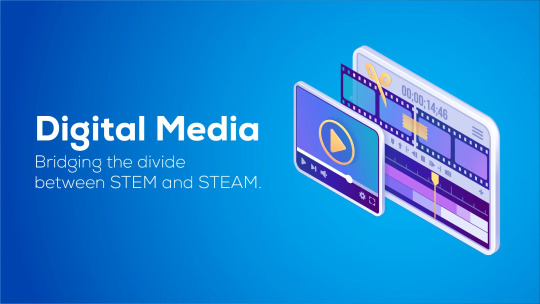
Digital Media and Arts is the intersection of the world of Language & Arts with the technologies and tools of the 21st-century world. The ability to conceptualize, communicate and express in as many forms as possible is an essential element even if it means working in the field of traditional STEM. Digital media, video and audio editing and production along with scriptwriting, storyboarding and animation are what brings balance to the field of Science and Arts. A truly integrative STEM has always included the integration of Languages Arts into the STEM Projects.
Our world has transitioned into the digital age, where many products created are digital in nature itself. Even if there are physical products, the products are not complete without some component of digital services around them.
Entertainment and Advertising have completely moved online. So with everything in terms of expression, communication and arts moving digital, many innovations have become possible whether it is art gallery displays using holographic displays or using live streaming on Facebook for your drama play.
Digital Media allows for new possibilities of creating and communicating and interacting at a speed like never before and hence gives the required insights for innovation. The need for quality content, the drive to capture this newfound digital space has made the digital media and arts crucial for innovation.
#STEM Lab for schools#Robotics Lab#Coding Program for schools#STEM Curriculum Middle School#Design Lab for Schools
0 notes
Text
Robotics Lab | Creya learning
All around the world from our homes to offices to factories to even software companies, the one thing you can see and sometimes not see is the rise of the Robot: The machine with a mind that is doing things for us. From the mundane to the dangerous to the entertaining ones, to the faster and smarter ones, we have all kinds of robots that are filling the world around us. From cars that are autonomous to software coding tools that also behave like robots to the more familiar factory autoboots, we now have the increasingly agile and human-like robots: the humanoid robot. For most of us, Robotics is the pinnacle of the achievements from the field of STEM as it involves tools, technologies and understanding from multiple disciplines. It is not far from the truth if we say that every student should have a though understanding of not only how to build robots, but also to understand why they are being built.
Robotics requires a leap of imagination given that we are trying to replicate parts or whole of functions and activities as to what a sentient human being would do and, in many cases, even more than what a human would do. Whether it’s the autoboots, managing the logistics in a large warehouse of amazon, a skilful surgery with very high precision or the Mars rover that is collecting samples from a planet where no human has yet landed; all these innovations are possible thanks to the exciting field of Robotics.
Robotics is the key to innovating the use of technologies and the thought process pushing the boundaries for the betterment of human life.
Since Robotics takes the mundane jobs away and increases more intelligent works and can command strength and agility, it allows humans to free think the application without constraints and that’s driving innovation at an exponential speed.
#STEM Lab for schools#Robotics Lab#Coding Program for schools#STEM Curriculum Middle School#Design Lab for Schools#AI Coding for Schools#Best STEM Learning Company India
1 note
·
View note